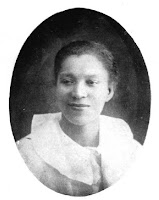"The poet Langston Hughes liked to wryly describe the Harlem Renaissance — the years from just after World War I until the Depression when black literature and art flourished, fed by an awakening racial pride — as 'the period when the Negro was in vogue.' Note the past tense. [...]
The names of Harlem's heyday are now part of the American literary canon: Hughes; his good friend Zora Neale Hurston; fellow writers Arna Bontemps and Jean Toomer; poet Countee Cullen; and novelists Nella Larsen, Wallace Thurman and Jessie Redmon Fauset. What is far less known are the white patronesses who made much of their work possible.
 |
| Langston Hughes, 1958 From: TheAlchemist's Pillow |
Read more…
A change took him South where he ran into Zora in New Orleans. She was touring the South in her own car, collecting materials for research. Together they spent several weeks driving through the rural South collecting folk songs and stories.
They returned to Harlem and Hughes introduced Hurston to his patron the 'Park Avenue Godmother' Charlotte Mason. Under Charlotte Mason’s sponsorship they began to collaborate on a play Mule Bone. Mason hired a third Harlem Renaissance figure Louise Thompson to do the typing for $150 a month.
Zora found Louise and Langston growing a little too cozy. Then one can only surmise by some mischief concocted by Zora, Louise was suddenly fired. Hughes wanted Louise to continue typing and offered to share author credits. Zora opposed the idea and with only two acts completed Hurston packed up and took off on another tour taking the notes and manuscript. Despite his great affection for the Godmother Hughes was feeling controlled, beholden and with his creativity stifled their relationship deteriorated and not long after she cut him off."
— Norwood Holland's Editorial Independence
Read more…
Buy this book, and works by all the writers mentioned in this post here...


No comments:
Post a Comment